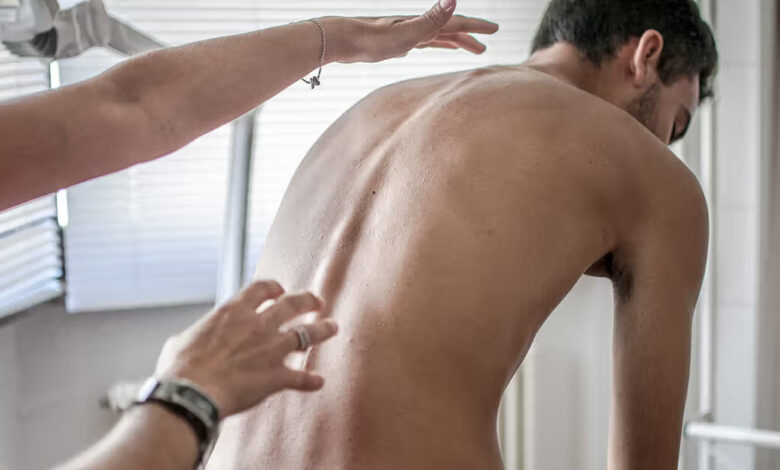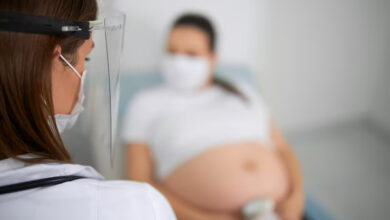Effective Scoliosis Treatment Options in Melbourne

Scoliosis is a condition in which the spine develops a sideways curve. While mild cases may not require treatment, more severe scoliosis can lead to health problems and affect quality of life. Several effective treatment options are available for those living in Melbourne who are affected by scoliosis.
Understanding Scoliosis
Scoliosis is typically diagnosed in childhood or early adolescence but can also develop in adults. The most common type is idiopathic scoliosis, meaning the cause is unknown. Scoliosis can range from mild to severe, with the curve measuring 10 degrees to more than 40 degrees.
In mild cases, scoliosis may go unnoticed and not require treatment. However, if left untreated, more pronounced curves can cause back pain, posture problems, difficulty breathing, cardiovascular issues, and reduced mobility. That’s why monitoring the curve’s progression and considering treatment options if it worsens is essential.
Bracing for Scoliosis
Bracing is the most common non-surgical treatment for scoliosis. It is typically recommended for adolescents with curves between 25 and 40 degrees that still have growth. Bracing can effectively prevent the curve from worsening where surgery is required.
The type of brace used will depend on the location and severity of the spinal curve. The most common is a rigid plastic TLSO (thoracic-lumbar-sacral orthosis) brace worn under clothes. Though bulky, today’s braces are designed to be more lightweight, comfortable, and discreet than in the past.
Wearing the brace for 18-23 hours daily halts the curve’s progression by applying corrective forces. Bracing is continued until the teen is skeletally mature and growth has stopped. For bracing to be successful, the angle should still be flexible rather than rigidly fixed.
Physical Therapy
Physical therapy is often incorporated into a comprehensive scoliosis treatment plan. Specific PT exercises can help strengthen muscles supporting the spine, improve posture, increase range of motion, reduce pain, and delay curve progression.
A physical therapist will evaluate the individual’s case and design a customised therapy program. This may include postural training, spine stabilisation exercises, core strengthening, balance training, and more. Physical therapy can be done in conjunction with bracing or other treatments.
Chiropractic Care
Some individuals with scoliosis choose chiropractic treatment to help manage their spinal condition. Chiropractors use their hands or small instruments to apply controlled forces to joints, muscles, and ligaments.
The goals of chiropractic care include:
- Realigning the spine.
- Restoring mobility.
- Relieving muscle spasms.
- Encouraging proper posture.
- Reducing pain associated with scoliosis.
Techniques like spinal manipulation, mobilisation, and soft tissue therapies may relieve symptoms and halt curvature progression in mild cases.
Exercise and Lifestyle Changes
Regular physical activity can benefit those with scoliosis in several ways. Targeted exercise strengthens core and back muscles crucial for supporting the spine. Being active also improves balance, coordination, and posture.
Low-impact cardio exercises like walking, swimming, or cycling keep the back muscles toned. Yoga helps build flexibility, while Pilates targets the core muscles. Lifestyle measures like maintaining a healthy weight, quitting smoking, and managing stress can support overall wellness.
Surgery for Severe Scoliosis
Surgery may be recommended for those with curve magnitudes exceeding 40-50 degrees to correct the scoliosis and prevent its long-term complications. Modern advances have made scoliosis surgery much less invasive and safer.
There are two main surgical approaches. The first involves fusing the vertebrae with bone grafts and metal implants like screws and rods. The second is vertebral body tethering, which uses implants to guide growth on the outer curve. Both procedures aim to straighten the spine and stabilise it in the corrected position.
Though recovery takes time, surgery significantly improves scoliosis symptoms and quality of life when more conservative options are ineffective. Close monitoring after surgery is needed to ensure the scoliosis curve correction is maintained.
Finding the Right Treatment in Melbourne
Living with scoliosis presents unique challenges. But the good news is Melbourne has high-quality clinics, therapists, chiropractors, and surgeons who can provide personalised and effective treatment for this complex spinal condition.
If you work closely with your healthcare providers, bracing, physical therapy, lifestyle changes, chiropractic methods, and surgery can help manage scoliosis. From early detection to evidence-based treatment approaches, Melbourne has your scoliosis care options.
Conclusion
Scoliosis requires diligent monitoring and individualised treatment to halt the progression of the abnormal spinal curve. Mild cases may need little intervention beyond regular checkups. For more pronounced scoliosis, bracing, physical therapy, chiropractic techniques, exercise, and surgery can all help restore spine alignment, reduce pain, and improve quality of life.
Patients can find the most appropriate treatment plan for their unique situation by consulting scoliosis specialists in Melbourne. From therapy to surgery, Melbourne offers effective options to manage scoliosis and its impact. With proactive scoliosis treatment in Melbourne, most people with scoliosis can live whole, active lives.



